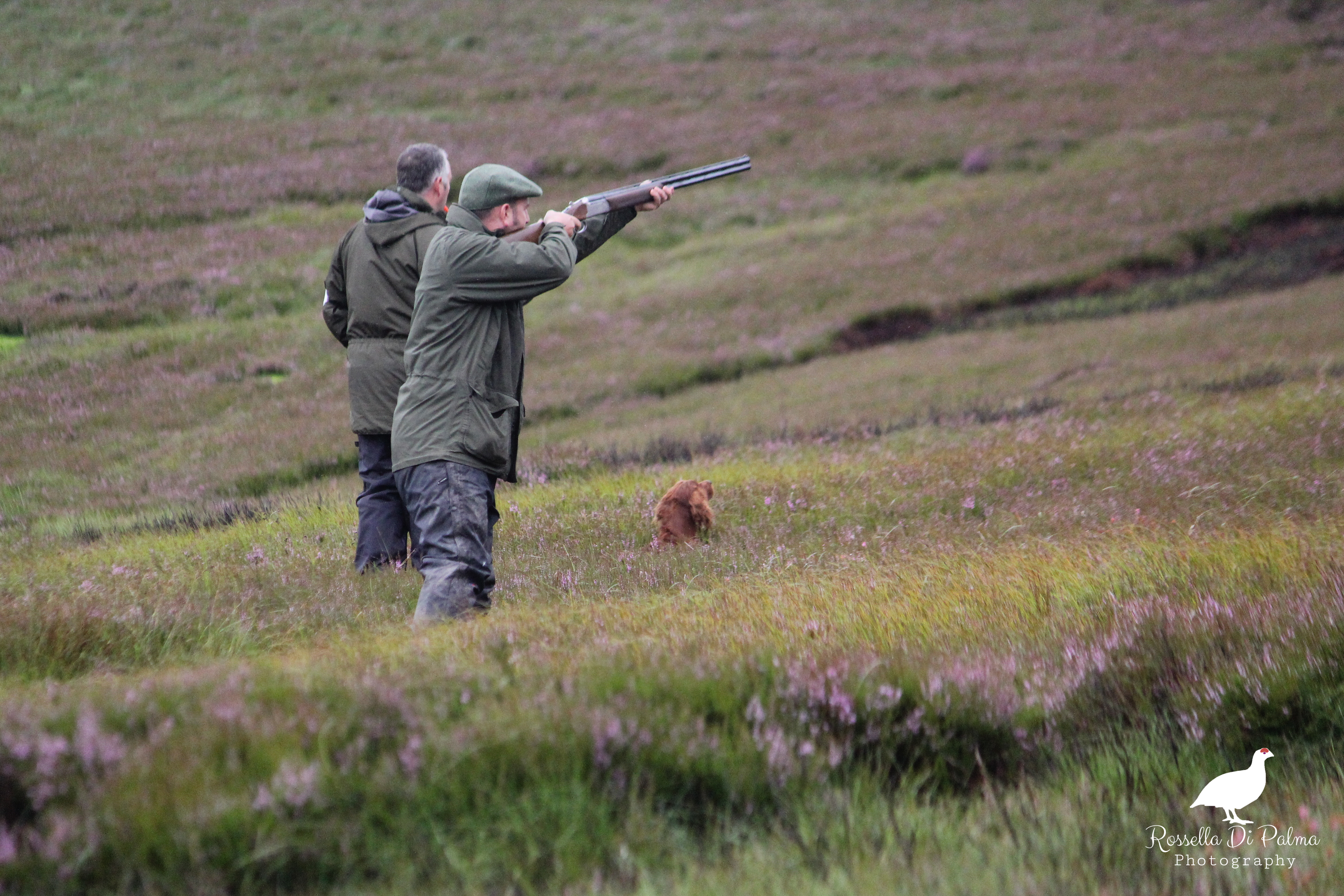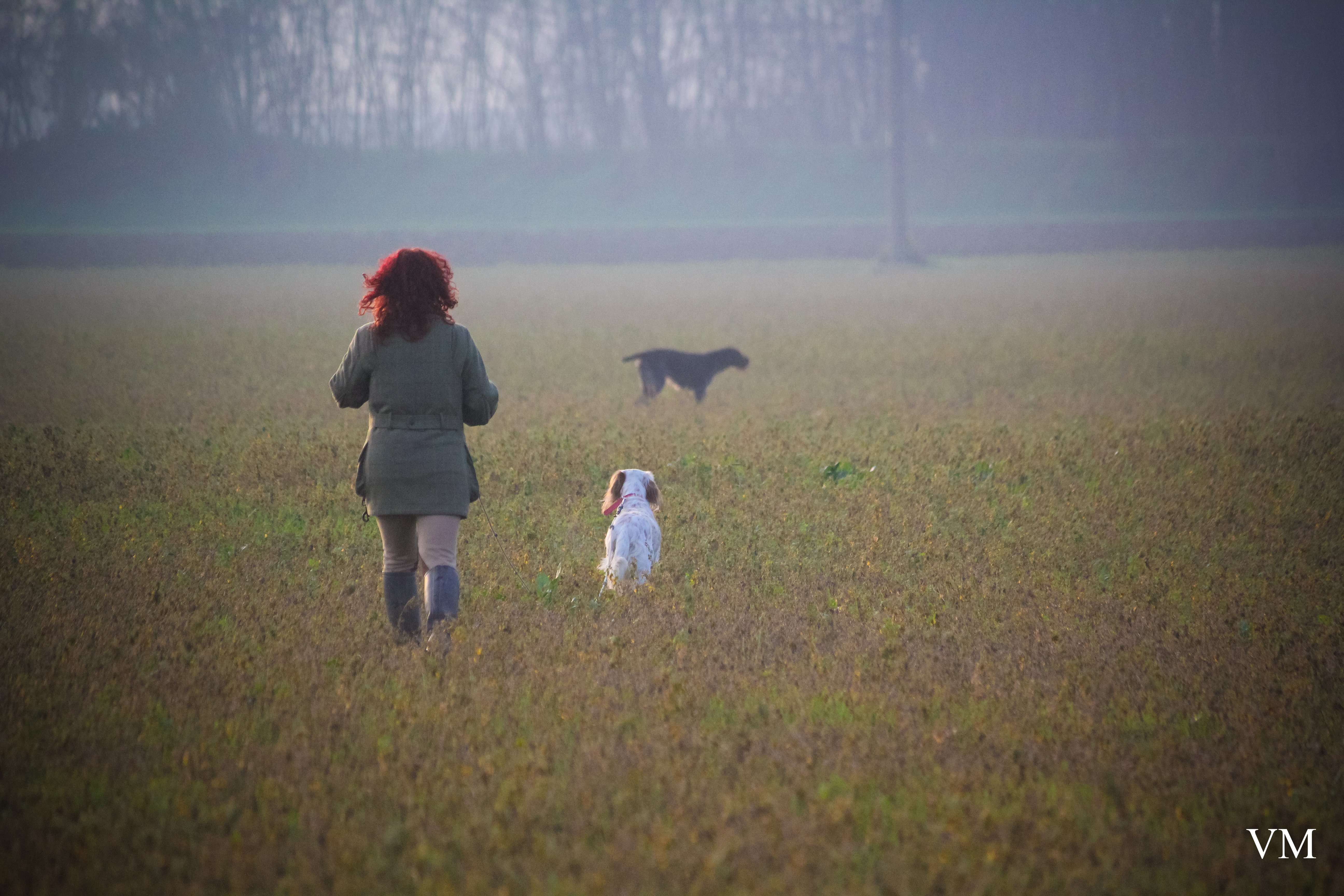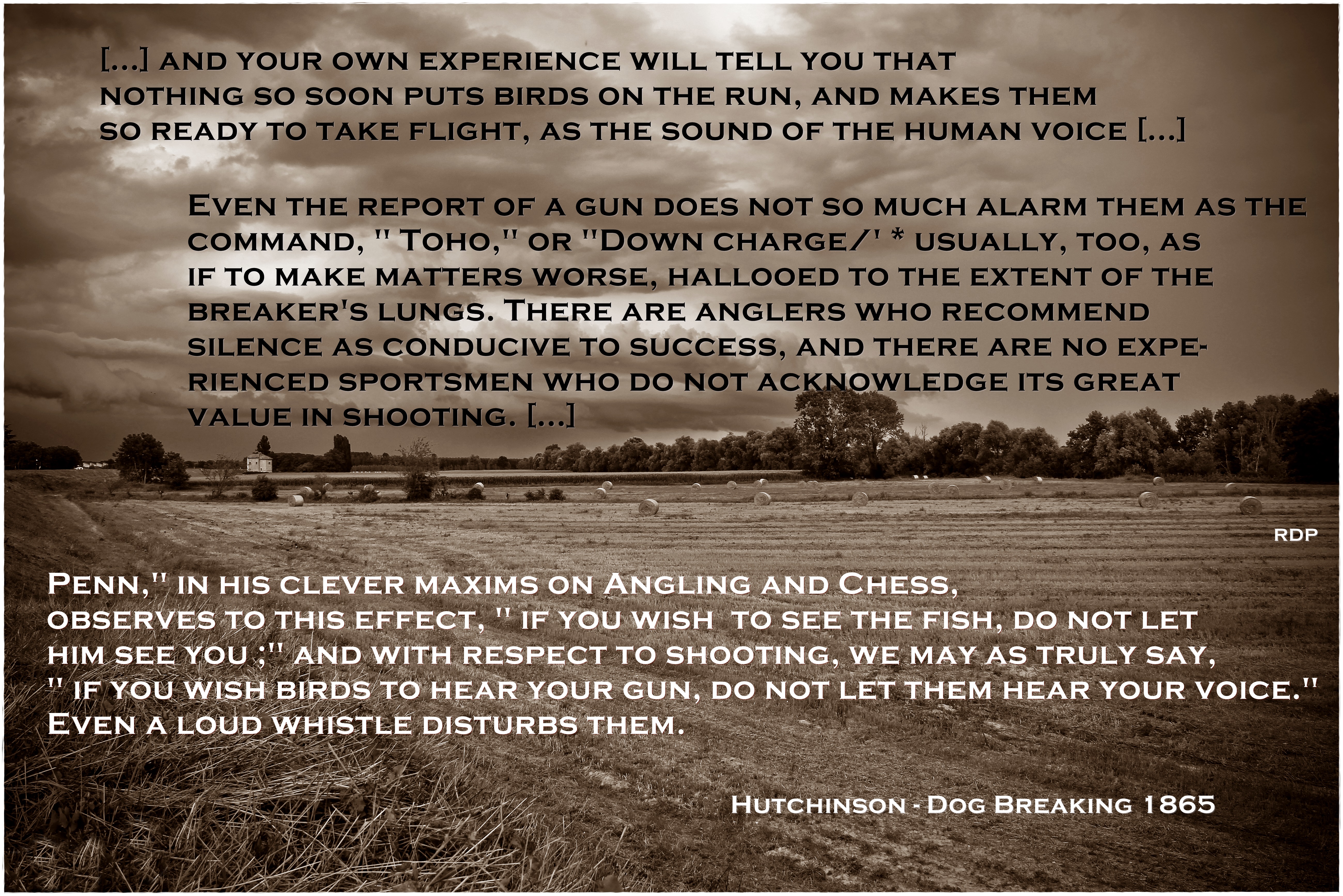
Gun Proofing your Dog by Tok Mostert
Introducing a dog to gunfire is and will remain a critical element in his training. Many good dogs have been ruined by a wrong use of gunfire and some develop problems later that are not easy to solve. Having a gun shy dog is frustrating and leads down a long path of re-training and sometimes a dog that cannot be hunted at all. The dog becomes so frightened by gunfire that when he does scent a bird he will avoid pointing, as this will lead to a shot or even more shots being fired.
I have a somewhat different approach to training my dogs, gundog or lapdog all receive the same training. Once the puppy has developed a bond with me and has settled in well in our home, but most of all, trusts me I start “Boom Proofing” him. Even tough our lap dogs have never been around gunfire, they react the same way (or do not react at all) to loud noises or fireworks, exactly like a gundog. As said above, the puppy must trust you and understand that you offer protection and support, both mentally and physically. I start by “scaring” them a little by dropping a magazine flat on the floor, it should make a slapping sound, not a overly loud banging sound. I do this when the puppy least expects this, a surprise if you will. The natural reaction is for them to scare, run or hide, sometimes both. Here two things are extremely important, your response and the timing of your response. I respond immediately, the puppy has no time to figure out what made the noise, I immediately give both verbal and physical support to the dog. “Come girl, oh there you are, what a good girl”. I also offer my physical support by kneeling down and opening my arms to the dog, inviting him to me while giving verbal support. 99% of the time the dog responds by coming to me immediately, I then heap praise on the dog. As said before, be overly friendly! This is a negative-positive training technique. Always, always respond the same way, immediately, positively and friendly!
Eventually you will have to move up to heavier books! I go around slapping the outside of cupboards ,doors and any flat surfaces too. My response and the dogs always stays the same, eventually they come straight into me at the slap or bang sound, this is what I am aiming for. I do not stop there however, someday I may sneak up behind them and grab a leg or tail (I never hold onto the part I grab, it is a light touch) once again my response is the same, immediate, positive and friendly. Eventually the dog will respond positively immediately, even as you start your response, this is what I aim for. Do not overdo this, every other day or twice a week, once a day, is enough! I still do this and my dogs are between 1 and 7 years old.
Now please understand that to you it may sound like I am terrorizing my dogs, far from it, the incorrect reaction by the trainer is what would be categorized as terrorizing the dog.
Keep in mind we expose dogs to many “surprise” noises, doors slammed, cars backfired, plates and glasses breaking, fireworks etc there are thousands of examples.
A dog that is not accustomed, nor trained, for this often has a hard time when things go wrong. Dogs hang or impale themselves on fences, run through glass doors or run in front of cars every year with the fireworks, my dogs either look for birds or lie sleeping through it. As said before in another article, break down your training, a dog should be able to retrieve before you introduce gunfire like training with the retrieving training. I start with a cast and clap of the hands, move on to a cast and blank pistol (plastic revolver with very low charge caps). When you start with the blank pistol it is a good idea to have another person doing the cast and the shooting, Shoot 10-12 meters away from the dog, keep the dog steady and offer a lot of verbal support. If the dog shows discomfort at the shot, move further away with the blank pistol, if it does not bother the dog, move closer. Do this for every type of “gunfire” you introduce,. 22,9mm and shotgun should be started at least 20-25 meters away from the dog, further is better. Increase the caliber progressively, do not go from blank pistol to gauge 12 shotgun directly!

Read the dog, if he is uncomfortable offer more verbal, or physical support, if you do the blank pistol training right, the dog will already know that following the shot comes a retrieve, which you made a fun thing during the retrieving trainings, that is if you followed my advice. Once you get to the shotgun with the cast and shoot, your dog should be steady to the shot and cast, never let the dog break at the shot, never. Go back a step without the shot to get the dog steady again.
As said clearly before, hunting amplifies any little problems the dog has 1000 times. Get it right in training and you will have less disappointments during hunting (problems always come up during hunting).
Keep in mind that any negative inputs from you after the shot is going to affect the dog, you may not even realise you are being negative! It only takes three of such sessions to turn a dog gun shy, always, always end on a positive note when training, go back a step if you have to! Remember to have fun when training, the dog must enjoy what he is doing, and his desire to please you must be greater than his fear to fail.
It is so easy to get caught up in getting one thing right that you forget it is only a small piece of a incredible dog you are building, see the bigger picture!
Next article here.
Tok Mostert, a Professional Hunter from South Africa, now living in Sweden, is sharing his writings on dog training with us. You can start reading them from Part 1 here.





[…] Next article here. […]